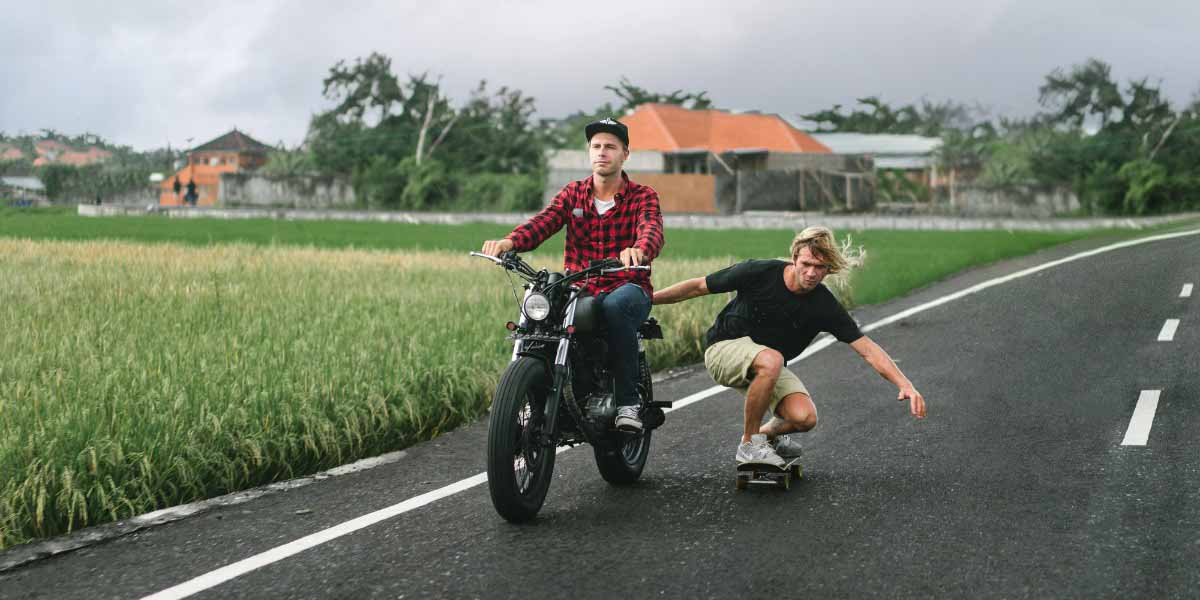People around the world love skateboarding for its thrills and fast speeds. If you’re a skateboarder, you’ll understand the importance of speed. Have you ever wondered, ‘’How fast can a skateboard go?’’ And what factors influence its velocity?
Well, the average skateboard speed usually ranges from 5 to 12 mph (8–19 km/h). But it all depends on a variety of factors, including the type of skateboard, the skill of the rider, the terrain, and your setup. In competitive events or intense downhill rides, pro skateboarders can hit speeds of 20 to 30 mph (32 to 48 km/h) or even more!
In this article, we’ll dive into the key factors that can affect your ride and share tips on how to boost your speed. Let’s get rolling!”
The Different Speeds of Skateboards
Cruising Speed: For most casual riders, the average speed of a skateboard is around 5–12 mph (8–19 km/h). This is the pace you’ll typically travel at when commuting or just cruising around town. It’s a comfortable speed for traveling short distances without much effort.
Downhill Speed: How fast can a skateboard go downhill? Experienced skateboarders can reach much higher speeds on downhill runs. With the right equipment and terrain, speeds of 50-90 mph (80-144 km/h) are possible! Peter Connolly holds the record for the fastest downhill skateboarding speed, reaching a lightning-fast 91.17 mph (146.73 km/h) on September 16, 2017, in Quebec, Canada. That’s incredibly speedy!
Electric Skateboard Speed: Day by day, electric skateboards are becoming increasingly popular. How fast can an electric skateboard go? The answer is that they can reach speeds of up to 20 mph (32 km/h) without any effort from the rider. Electric skateboards are like motor vehicles in some areas, so make sure to check the rules before you ride. Wear the necessary protective gear, stay safe, and follow the laws!
Longboard Speed: Longboards, with their larger wheels and longer decks, are designed for better stability and speed. They can reach higher speeds more easily than traditional skateboards. It is more popular for downhill racing and long-distance cruising. Built for cruising and downhill, it can maintain comfortable speeds of 8–9 mph (12–14 km/h) on flat surfaces.
What Factors Affect Skateboard Speed?
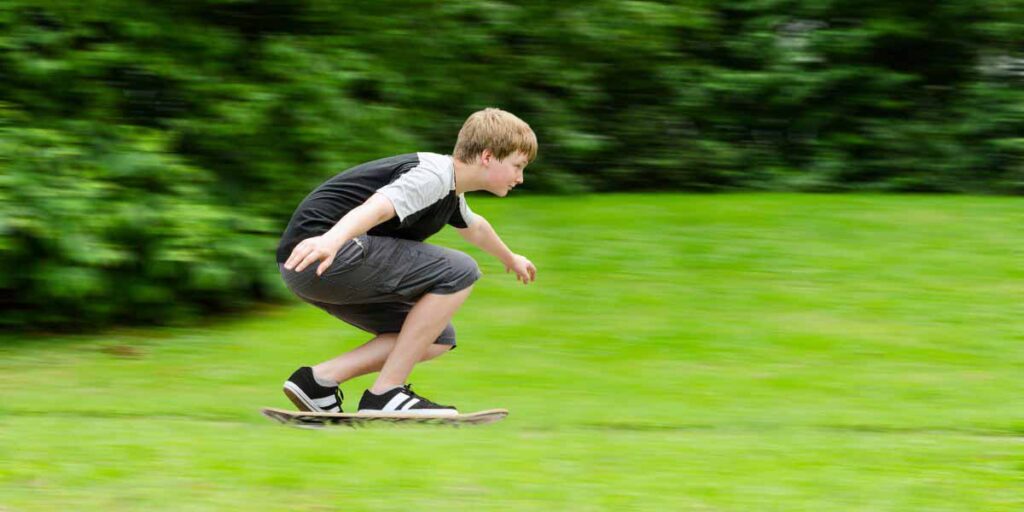
Several factors can affect your speed on a skateboard, both from your equipment and the environment you’re riding in. The main factors are in
- Types of Skateboards
- Rider Skill and Experience
- Terrain Impact
- Skateboard Quality And Setup
- Wheel Size and Hardness
- Good Skateboard Bearings
- Rider Weight
- Weather Conditions
Let’s have a breakdown of the main factors that can affect your speed.
Types of Skateboards
Skateboards come in different styles and types, each offering various speed potentials. Longboards are generally faster than standard skateboards. They have larger wheels and a longer wheelbase.
The popsicle skateboard is the standard choice for street skating and provides moderate speeds. Downhill skateboards are specially designed for speed and stability. Cruising boards offer flexibility and maneuverability.
Nowadays, electric skateboards are another lever. The benefits of electric skateboards include effortless speed, convenience for commuting, and reduced physical effort.
Rider Skill And Experience
The rider’s skill and experience play a significant role in skateboard speed. Experience matters! A pro rider with honed pushing technique and downhill knowledge will go much faster than a beginner.
Skilled skaters are better at maintaining balance, proper weight distribution, and momentum, which allows them to go faster. They can also achieve higher speeds through pumping and slowing-down techniques.
On the other hand, less experienced riders may struggle to maintain control and momentum. As a result, they are slower. A lack of basic techniques can affect their ability to maximize the skateboard’s speed potential.
Therefore, improving rider skill through practice and technique refinement can significantly enhance speed potential.
Terrain Impact on Skateboard Speed
Terrain refers to the type of surface on which a skateboard is ridden. It plays a crucial role in skateboard speed and overall performance.
Smooth pavement, such as well-constructed roads or skate parks, are ideal surfaces for achieving high speeds. With fewer obstacles and bumps, riding is smooth and uninterrupted, allowing skaters to maintain their speed and go even faster. Asphalt, in particular, provides excellent speed due to its smooth texture.
On the other side, rough or uneven surfaces can significantly decrease skateboard speed. Bumps, cracks, and debris on the road create friction and resistance, causing the skateboard to lose speed.
Downhill slopes will naturally increase speed, while uphill slopes will slow you down. This is known as gravity-assisted speed, but it can sometimes be dangerous at higher levels.
Skateboard Quality And Setup
The quality of your board is one of the important factors in achieving higher speed. If you don’t have a quality board, you can’t increase your speed.
A lighter skateboard with soft wheels provides you with less resistance, less friction, and less acceleration.
Investing in high-quality components and setting up the skateboard correctly can boost speed and improve the skating experience.
Wheel Size and Hardness: The Engine of Speed
Certainly! The size and hardness of skateboard wheels can significantly affect speed and overall performance. Here’s a breakdown of how skateboard wheel size and hardness can affect speed:
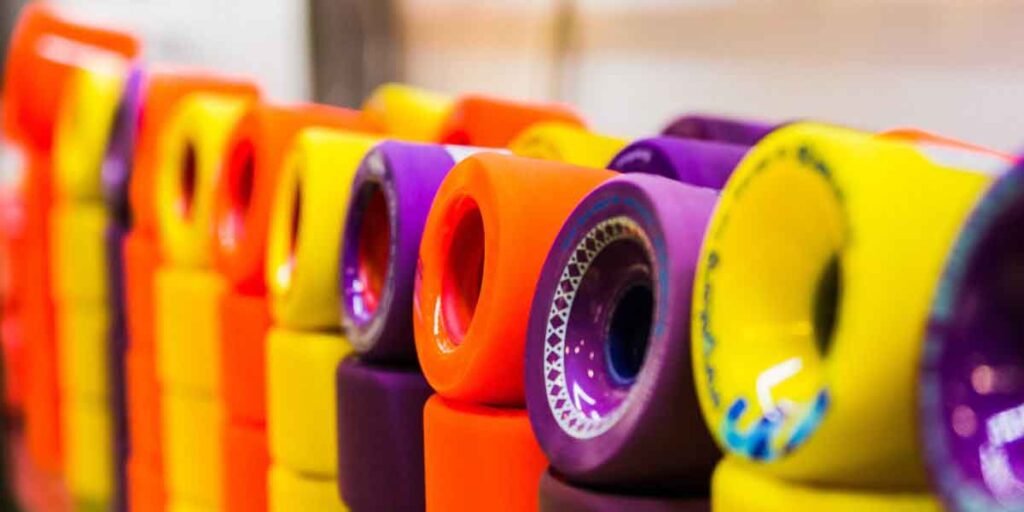
Wheel Size: (Diameter)
Larger wheels generally cover more ground per revolution, allowing for higher top speeds. They roll over cracks and bumps more easily, providing a smoother ride. However, larger wheels may have a slightly slower acceleration compared to smaller ones.
Smaller wheels are generally slower and offer more stability and flexibility, making them popular for amazing tricks.
Wheel Hardness: (Durometer)
Wheel hardness is measured on the durometer scale. A higher durometer indicates harder wheels.
Harder wheels (higher durometer) are faster on smooth surfaces because they offer less friction.
Softer wheels (lower durometer) provide better grip and shock absorption, making them suitable for rougher surfaces.
Wheels Material and Construction
When it comes to high-tech polymers wheels, finding the right balance of grip, durability, and speed is key. The specific formulation of the polyurethane material plays a crucial role in determining how fast the wheels can go.
Bearings: Enhancing Efficiency and Speed
Bearings are like tiny metal rings inside skateboard wheels. They let the wheels spin easily. Good bearings make the skateboard faster. If the bearings are in bad shape, the skateboard might not go as fast.
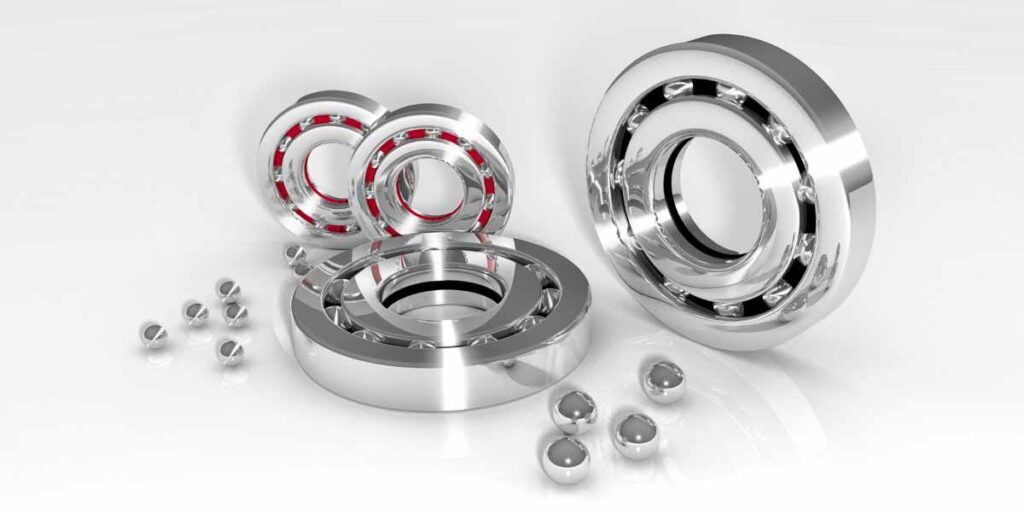
- Friction Reduction: High-quality bearings are designed to minimize friction between the wheel and the axle, allowing the wheels to spin more freely. Reduced friction means less energy is required to keep the wheels carving, leading to enhanced speed.
- Precision and Smoothness: Bearings with precision machining and smoother surfaces offer better performance. When the wheels spin smoothly without any wobbling or resistance, the skateboard can achieve higher speeds more efficiently.
- Durability: Durable bearings maintain their performance over time, ensuring consistent speed and reliability. Lower-quality bearings may degrade faster, leading to decreased speed as they wear out.
- Maintenance: Regular cleaning and lubrication of bearings are essential to maintaining optimal performance. Dirty or dry bearings can increase friction, slowing down the wheels and reducing speed.
- ABEC Ratings: Bearings are often rated using the ABEC (Annular Bearing Engineers’ Committee) scale, which measures their tolerance and precision. Higher ABEC-rated bearings generally offer smoother performance, potentially leading to increased speed.
Rider Weight
If a rider is heavier, they might find it easier to start moving because they have more force when they push off. But once they’re moving, heavier riders might not go as fast as lighter ones. This is because their weight creates more resistance, slowing them down.
When going downhill, heavier riders might go faster because their weight helps them pick up speed quicker. Heavier riders might get tired faster because it takes more effort to keep moving at a steady pace.
So, while weight matters, other things like skill and where you’re riding also affect how fast a skateboard goes.
Weather Conditions
Skateboarding is usually the fastest when it is dry outside. Wet surfaces can make the wheels and the ground rub more, which slows down the skateboard.
Wind can either help or hinder skateboard speed, depending on its direction. A tailwind (wind blowing from behind) can boost the skateboard, making it go faster. However, a headwind (wind blowing against the skateboard) can create resistance, slowing it down.
Hot weather can make the asphalt softer and enhance rolling resistance. And cold weather can make the bearings less efficient. You can also skate in the rain but the speed depends on the condition.
Real-Life Skateboarding Speeds: A Detailed Overview Table
Here’s a table summarizing the real-life average skateboarding speed:
| Scenario | Average Speed |
| Intermediate skateboarders with soft wheels | 7.5 mph (12 km/h) |
| Traveling a short commute to school | 8-12 mph (12-19 km/h) |
| A leisurely cruise to the beach | 7 mph (11 km/h) |
| Extended ride on flat terrain | 5-8 mph (8-12 km/h) |
| Pushing gently on a longboard | 8-9 mph (12-14 km/h) |
| Riding with quality ceramic bearings | 7.5-12 mph (12-19 km/h) |
| Advanced downhill riding | 50-90 mph (80-144 km/h) |
These speeds can vary based on terrain, skill level, equipment, and environmental conditions.
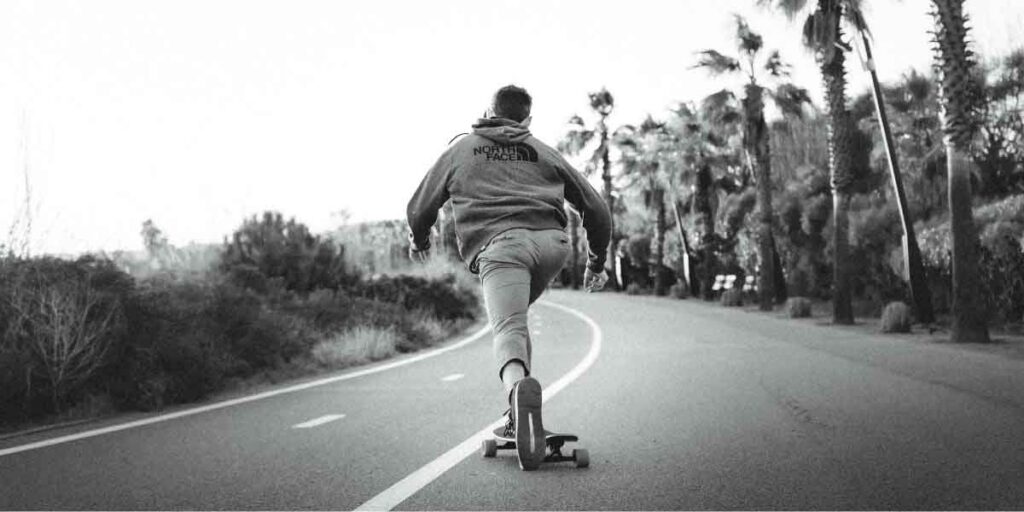
How Much Faster Is Skateboarding Than Walking?
The speed of skateboarding compared to walking can vary depending on various factors. The factors are the skill level, the terrain, and the specific conditions. However, as a general estimate, skateboarding is typically faster than walking.
Skateboarders can usually travel at a speed of around 8 to 15 miles per hour (12 to 24 kilometers per hour). In contrast, the average walking speed for most people ranges from 3 to 4 miles per hour (5 to 6 km/h).
Is Skateboarding Faster Than Running?
Skateboarding can be faster than running when you’re on a smooth surface and know how to ride well. But if you’re talking about sprinting, runners usually win over short distances.
Elite sprinters can reach speeds of over 20 mph (32 km/h), which can surpass the speeds achieved by most skateboarders.
How Can I Increase My Skateboard Speed?
There are several ways to increase your skateboard speed, both with your technique and your equipment. Here are the main points:
- Optimize Your Bearings: Invest in high-quality bearings with ABEC ratings of 5 or higher. Clean and lubricate them regularly to reduce friction.
- Maintain Your Board: Keep your skateboard clean and free of debris, especially around the wheels and bearings. Regularly check for any signs of wear or damage.
- Adjust Your Trucks: Find the right balance between tightness and looseness in your trucks. Looser trucks allow for smoother turns and faster acceleration. On the other hand, tighter trucks provide stability at higher speeds.
- Improve Pushing Technique: Focus on pushing with your back foot efficiently, using long, powerful strokes to generate speed. Keep your front foot over the board for balance and stability.
- Upgrade Wheels: Consider upgrading to larger and harder wheels. Because it can roll faster and maintain momentum better, especially on rough surfaces. Look for wheels with a durometer rating of 95A or higher for maximum speed.
- Practice: The more you skate, the better you’ll become at controlling your board and maximizing your speed. Practice pushing, carving, and pumping to build strength and technique over time.
Combine good technique with the right equipment to pump, push, and carve your way to faster skateboarding.
The Bottom Line
Curious about how fast a skateboard can go? Picture this: cruising through the streets or tearing up the park, feeling the wind rush by.
Skilled riders can hit speeds of 15 to 20 miles per hour or even faster with the right setup. Whether you’re into going fast or just love cruising and making cool turns, skateboarding is always exciting!
So, grab your board, roll with the flow, and experience the thrill of skating at full speed!

